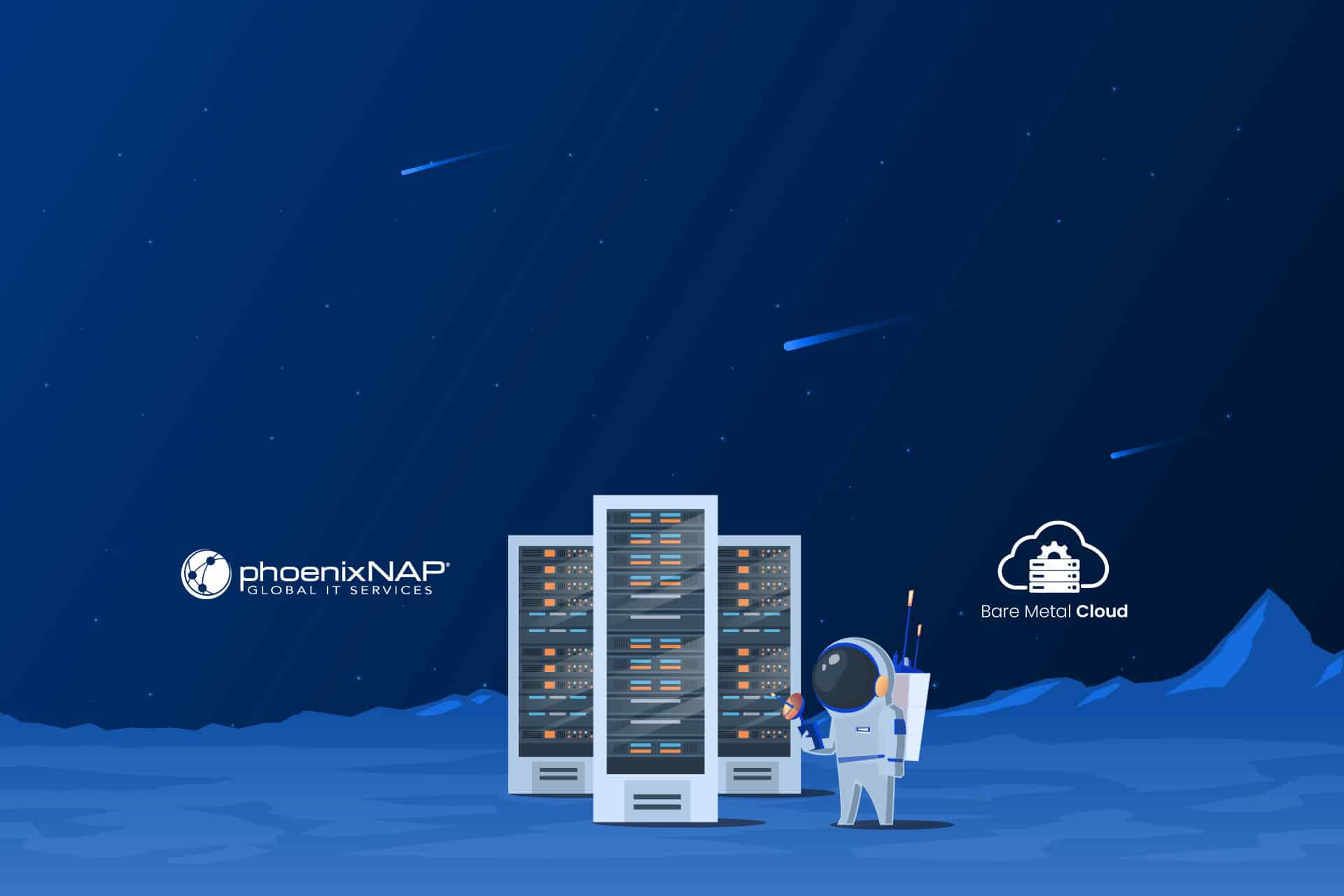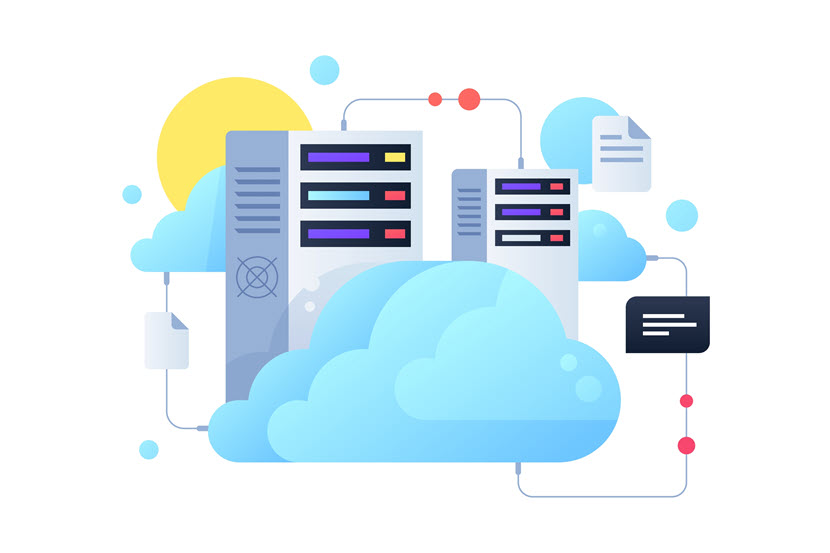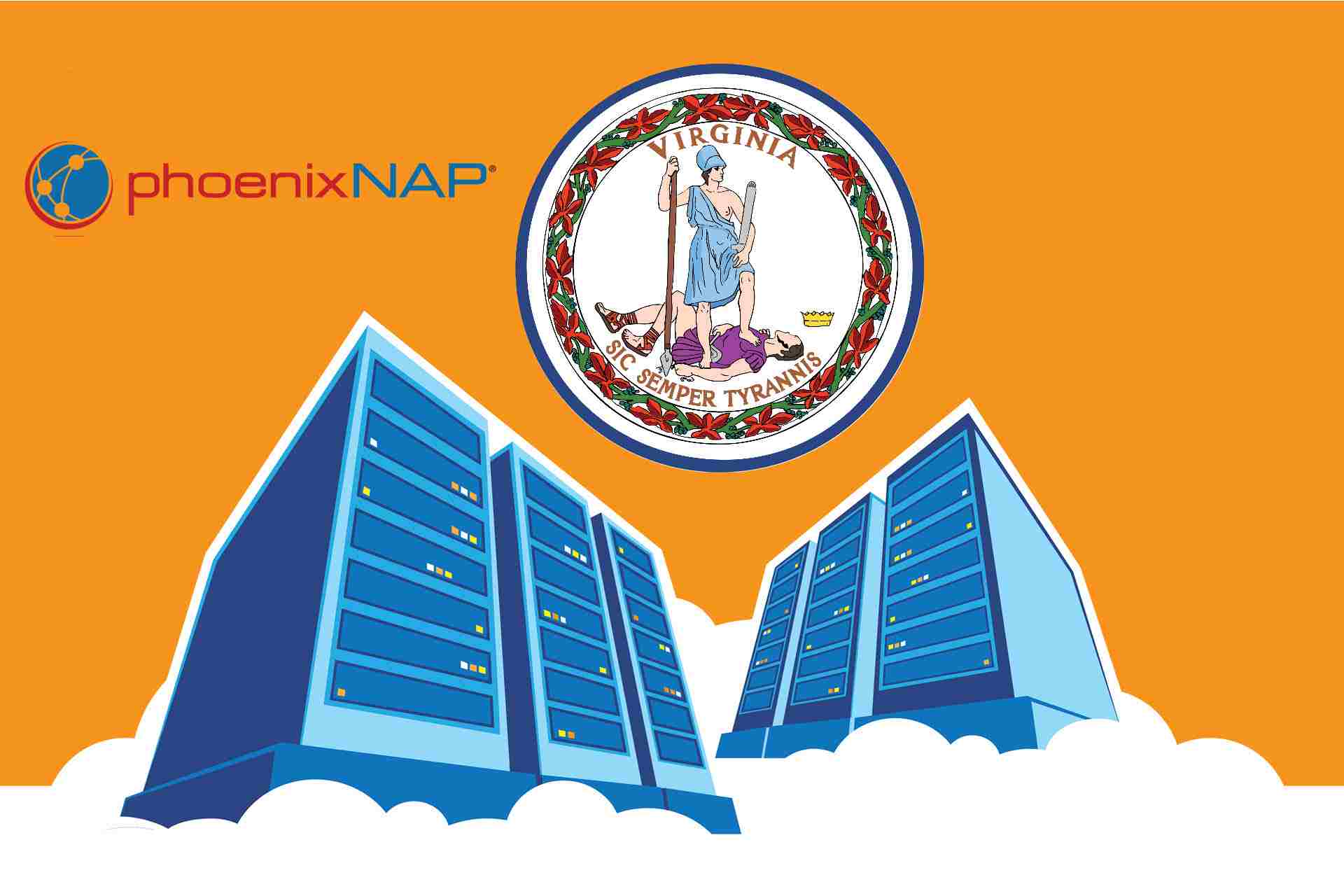Authored by Ron Cadwell, founder and CEO of phoenixNAP. Prepared for publishing by the Editorial team.
There used to be a clear division between bare metal and cloud infrastructure. But, as technology evolved, the border became blurry, and the two types of infrastructure now work together to overcome their individual shortcomings.
In this article, I will explain how bare metal and cloud work together to create new possibilities.
Bare Metal vs. Cloud: Main Differences
Let’s start with a quick overview of the differences between traditional bare metal and cloud servers.
What is Bare Metal?
A bare metal server is a physical computer that provides its single tenant user direct access to server resources, the CPU, memory, and storage. The user can install whatever operating system and software they like, they can even set up a hypervisor for creating and managing virtual machines (VMs).
The main benefits of bare metal servers are:
- Computing power – A physical server’s computing potential is very high. Therefore, bare metal servers are often used for performance-sensitive workloads that require substantial computing resources.
- Customization options – As the name suggests, bare metal servers offer its tenants access to the bare hardware. Consequently, customization options are plentiful.
- Security – Bare metal servers are inherently more secure because it provides dedicated.
There are three prominent deployment models:
- On-premises – The organization deploys and maintains the server themselves. This type of deployment requires trained IT staff that will handle anything from deployment to networking, patching and maintenance.
- Colocation – The organization deploys its hardware in rented space in a data center. The data center provider provides on-site assistance and managed services.
- Bare metal server hosting – The organization leases a bare metal server from an IaaS provider on an OpEX model. The provider deploys and maintains the server.
One major disadvantage is that bare metal servers typically take at least a few days to deploy and configure, even weeks if you need to provision the components. Consequently, scaling is also difficult and so is configuring multiple identical environments (e.g., for QA and Prod).
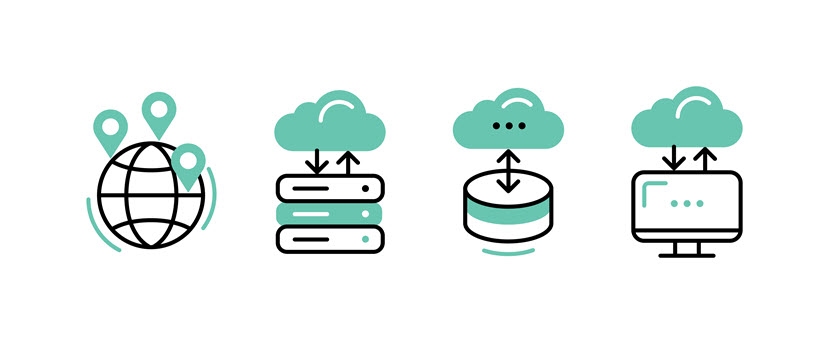
What is Cloud Computing?
A cloud server is a virtual server that delivers computing power over the internet. Yet, the cloud is not completely virtual. It uses a software layer (i.e., a hypervisor) to run thousands or hundreds of virtual machines (VMs) on interconnected physical servers.
The main benefits of cloud computing are:
- On-demand provisioning – End-users can self-provision and manage cloud resources. The deployment process is swift, and the virtual server is ready for use in a matter of minutes.
- Pay-as-you-go service – Organizations lease cloud resources on a pay-as-you-go model. There are no lengthy contracts and organizations pay for what they use.
- API and CLI integration – Most cloud providers provide powerful API and CLI integration capabilities. Organizations automate servers using these capabilities, pawing the way for DevOps infrastructure.
- Scalability – Cloud resources provide flexible scalability (both up and down).
The most popular cloud deployment models are:
- Private cloud – Private cloud runs either on-site or within a colocation center. It is deployed and managed by a single organization. The organization running a private cloud needs to be involved in hardware maintenance and security, much like when collocating servers.
- Public cloud – The most common cloud model, public cloud offers the cheapest computing resources on the market. Public cloud vendors manage all aspects of the infrastructure and the end-user pays for whatever resources they use.
- Virtual private cloud (VPC) – A mix between public and private cloud, VPC offers isolated access to a certain segment of a public cloud. This type of cloud deployment model offers more security than a regular public cloud.
- Community cloud – Community cloud is a shared virtualized environment deployed to support the use case of a group that shares the same goals and needs. Usually, a group of organizations set up community cloud either on-site or hosted at a colocation center. It is available only to the organizations that manage it, and public access is not available.
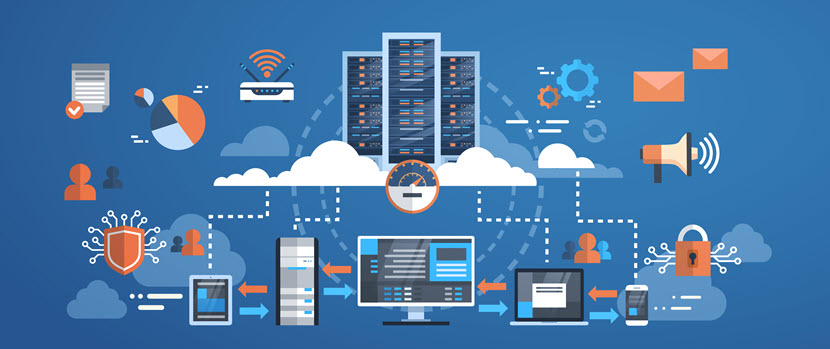
phoenixNAP’s high-performance cloud solutions prioritize security, affordability, and reliability, making them ideal for startups looking to take advantage of the cloud.
As opposed to bare metal servers, cloud computing offers better scalability, fast deployment, pay-as-you-go payment models and self-service via admin consoles and APIs. However, in general it offers less customization options, security, and computing power.
When Bare Metal and Cloud Technologies Work Together
We often consider bare metal and cloud an either-or proposition, each with its strengths and weaknesses. But hybrid infrastructure has a competitive edge over both.
Here are the technologies that combine bare metal servers with a cloud environment:
Hybrid Cloud
Hybrid cloud infrastructure combines public cloud and on-premises infrastructure in a single unified environment. It makes use of on-premises servers or private cloud for high-intensity workloads and sensitive data while also taking advantage of the cost savings and flexibility of a public cloud for less critical workloads. To unify the different environments, organizations implement orchestration and automation.
The main benefits of hybrid cloud are:
- Scalability – The public cloud component in hybrid cloud ensures the environment is highly scalable up or down.
- Flexibility – The different components of hybrid cloud offer a solution to a wide range of workloads. Organizations can move workloads between private and public clouds as needed or use multiple cloud providers for complex or specialized tasks.
- Security – The on-premises component of hybrid cloud offers a secure environment for sensitive workloads.
- Cost-effectiveness – Organizations using hybrid cloud have multiple different environments at their disposal. They can host specific workloads in the most appropriate and cost-effective environment.
While the benefits are plentiful, hybrid cloud architecture is difficult to master. To truly see the benefits, organizations must overcome the challenges of deploying hybrid cloud. Generally, organizations that have experience in setting up private clouds will find it easier to adopt hybrid cloud.
Bare Metal Cloud
Bare metal cloud is a type of infrastructure that allows users to have full control over a physical server and all its resources while retaining the convenience and flexibility of a cloud.
BMC servers are deployed in less than 2 minutes and are manager through a web interface or API and CLI for server automation purposes. Bare Metal Cloud is a cloud-native, single-tenant, non-virtualized environment, which unlocks the full processing power of the hardware without unpredictable performance variations (i.e., noisy neighbors), and overhead from running a hypervisor.
Bare metal cloud is uniquely useful for those that require a lot of processing power, customization options, and scalability but don’t want to invest heavily into hardware or be locked in with a single vendor.
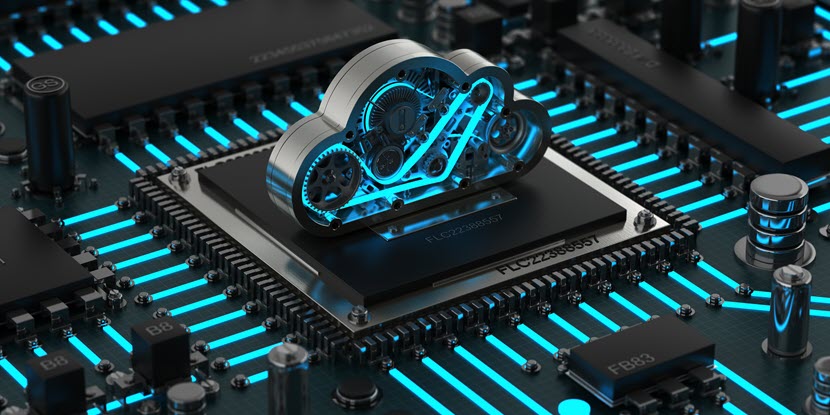
phoenixNAP’s Bare Metal Cloud is ideal for resource-intensive workloads and customized environments.
Mesh Computing
Mesh computing relies on using a network of nodes that are non-hierarchically connected to as many other nodes as possible. This redundancy makes mesh computing networks highly reliable because data can take multiple routes to travel to each node.
Mesh networks are used in situations where centralized infrastructure is not possible or desirable. However, a central cloud system is often the preferred choice for processing and analyzing data.
Mesh networks are well-suited for several applications:
- High-risk monitoring in medical and industrial settings.
- Control of heavy machinery.
- High-risk security systems.
- Monitoring of electricity and microgrids.
- Smart street lighting.
Edge Computing
Edge computing involves processing and storing data at the edge of a network, to improve response times and save bandwidth. Because distance is one of the primary factors affecting network latency, an edge server processes data near the source, rather than transmitting it to a central server.
However, edge computing is not a replacement for cloud computing, but rather a supplement. In most cases, the edge server processes only the critical data, while sending the rest to a cloud, making it uniquely suited for situations where connectivity is limited. Edge computing’s low latency also enables unique use cases that previously weren’t possible.
Note: Laern more about the difference between Edge Computing vs Cloud Computing in our separate article.
Here are several applications that require utilize edge computing for real-time processing and decision-making:
- Internet of things devices.
- Remote healthcare.
- 5G networks.
- Industrial and agricultural automation.
- Self-driving vehicles.

phoenixNAP is taking Bare Metal Cloud to the edge to meet the growing demand for computing in the U.S. Southwest. Our data center in Austin, Texas offers access to Bare Metal Cloud with a latency of only 10 milliseconds.
Conclusion
When combined, bare metal and cloud provide the best of both worlds – the security and performance of dedicated hardware with the scalability and elasticity of virtual resources.
By seamlessly moving workloads between on-site infrastructure and public cloud, hybrid infrastructure optimizes costs and resource usage and allows businesses to respond to changing needs in a competitive environment. Combining bare metal with cloud infrastructure also improves reliability and redundancy in case of an outage or other disaster.
Although hybrid infrastructure has existed for some time, we are only scratching the surface of its potential, and I believe it will play an increasingly important part in the computing landscape as more organizations seek to take advantage of its benefits.
